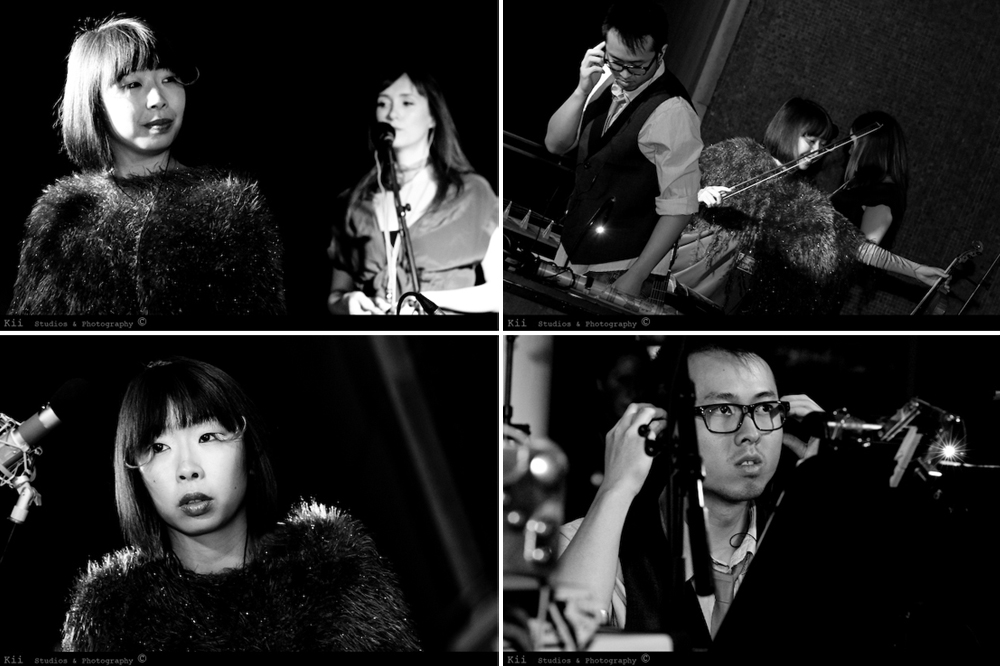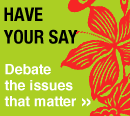| Piccadilly Revisited: The Sounds of Silence |

|

|

|
| Culture | |
| Monday, 29 March 2010 | |
|
For weeks, I’ve been trying to get in touch with co-composers Ruth Chan and Suki Mok about their work for Piccadilly Revisited without much luck. It was not surprising, given the pair was so entrenched with their preparations in getting the music to fit seamlessly with the original black & white film and all the additional creative components as well. Fortunately, as the tracks were finally laid down, Ruth Chan did manage to find time to share her thoughts with Dimsum about this mammoth musical undertaking. From this little glimpse, it sounds amazing! What was the response from the work-in progress performance at Southbank last year? Did the audience provide much feedback for the new score? How would you describe the original score used in ‘Piccadilly’? For initial preparations, did you watch some silent films to get a feel of the style and structure used?
The only version I have heard is the one that Neil Brand wrote (BFI dvd version). As he is a silent film pianist, his style leans more toward early jazz and silent film era and based entirely on just the medium of film and the period. As the concept of Piccadilly Revisited is completely different and new, we had to reflect on that with this score. I have actually composed for silent film before and have seen quite a few before, and each score has had its own style. Apart from giving it a contemporary feel, what was the inspiration for this new score? We wanted to portray Anna May Wong’s voice much more clearly with this new score as the project is predominantly about her. We were inspired by her strength and determination as well as her presence in her films. Her style was also very contemporary and timeless. Some of the clothing she wore in the film, you can still envisage people wearing them today. We wanted to give a feel of both Eastern and Western influences (just like she was) as well as a contemporary feel with the music to reflect her really. In the work-in-progress, the mood and the tone of the music was quite “dark” and “sinister” throughout. Why did you choose that direction? The original storyboard was very much focused on Anna May Wong’s struggles with the entertainment industry and her acceptance within the Western and Eastern society, and the music reflected that. Anna May Wong gradually became a very depressed person and an alcoholic. Also due to the very limited amount of live instruments and musicians we were able to use for the work-in-progress, we wrote something very abstract and electronic, but we always had other styles planned. How did you and co-composer Suki Mok collaborate on the ideas in creating the score? We spent the first month in the initial stages just discussing about what direction to take and our musical influences, we wanted to be as united as we can for the project. Although our backgrounds in music were quite different, luckily we have similar taste in music and mostly agreed from the very start the direction and approach to the score! We used to send each other music that we liked and our own ideas as a starting point. What are your musical influences? As a film composer, some of my influences have been from other film composers. Thomas Newman score for ‘American Beauty’ gave a new era in film music and Tan Dun’s Crouching tiger has a beautiful infusion of Eastern and Western style. But my musical taste varies from classical orchestral music to dance music. For this score, the Cinematic orchestra was a big influence and I loved their score for the ‘Man with the Movie Camera’ silent film, which has a very contemporary approach. Also artists like Matthew Herbert, Susumu Yokota and Ryuichi Sakamoto were used as initial musical references. Unlike composing a score for a feature film where there are other sound elements (such as sound effects or songs) that you can use to create the atmosphere and tension; how did you and Suki compensate for that? I actually found that without certain sound elements, composing for silent film actually gives us more creative freedom as we can focus much more on the mood and atmosphere without the distractions of certain audio, you can focus purely on the music without obstacles. Obviously with this project, that isn’t completely the case as we had some audio from the videos and dialogue to consider. And there are ways to create sound effects on a musical level. Also sometimes less is more, (based on eastern philosophy). Silence can sometimes create more tension than any music. Would you have liked to have additional musicians or an orchestra playing on the production? Of course, it would be lovely to be able to work with an orchestra, but it could have changed the approach and direction of the music. With an orchestra, you would be tempted to create something more cinematic and big, which is suitable for some scenes but not others. So we are happy with what we do have. Although some more Chinese instrumentalists and big band would have been wonderful! What changes have been made to the score in the final production of Piccadilly Revisited? As the storyboard has changed so much since the work-in-progress performance, so has the music. Most has been rewritten, and with more some amazing musicians coming on board, we have been able to expand our musical territory and styles to new levels. Without them, we could only dream of what we can create! What would you say is the most challenging aspect for the new score? Definitely to get the music to work with all the different mediums simultaneously! We have to get the music to work with the original film, video, storyboard and dance, sometimes all at the same time! It’s also very complicated technically to everything to sync, but thankfully we have a great production team that will help us with that. Are you and Suki looking forward to playing at the Royal Opera House? We are both very excited to perform at the Royal Opera House. Not only because of performing at such an establishment, but also because the whole project is so new and exciting; nothing like this has ever been done before. Kevin Han Read Part One of the Piccadilly Revisited special here: http://www.dimsum.co.uk/ Piccadilly Revisited, a multi-media celebration of the life and loves of Anna May Wong, Hollywood's first Chinese film star, will be performing at the Royal Opera House, Linbury Studio Theatre 30-31 March 2010. For bookings, visit: www.roh.org.uk Photo credits: David Bushnell |
|








